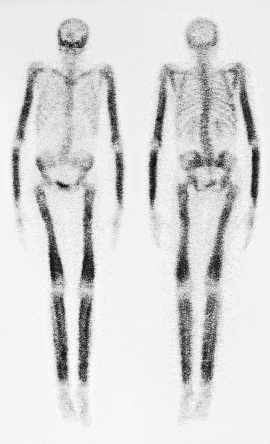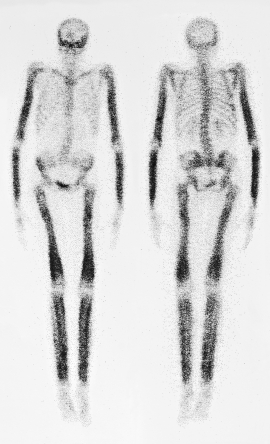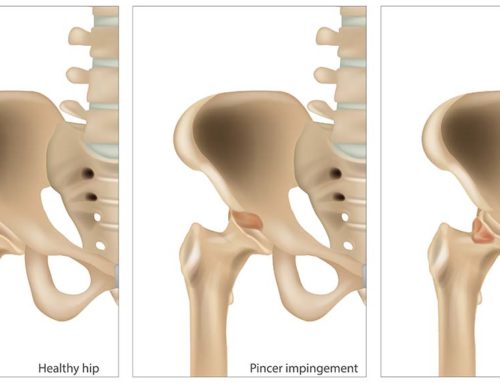Stress Fracture
Our bones are constantly remodeling, a balance between the cells that breakdown and the cells that rebuild bone. When we place excessive demands on an area (from something like excessive running or walking) there can be a net balance of bone breakdown, which can result in a stress fracture.
Stress Fracture
A stress fracture is a painful bone injury that can affect anyone. Common with runners and military personnel, stress fractures are most frequent in the lower extremity. The symptoms are often confused with those of shin splints or medial tibial stress syndrome. Specifically, the metatarsals (small bones in the foot) and the tibia (the bone in our leg below the knee) are common sites.
Stress Fracture – Diagnosis
X-ray is often the first step in diagnosing a stress fracture. Unfortunately, it is not the most sensitive tool for detection. The literature suggests that on average, pain is usually present between two weeks and three months before an x-ray will detect a stress fracture. In addition, 85% of stress fractures are missed on the first x-ray and follow-up x-rays only detect them 50% of the time. Therefore, bone scans or magnetic resonance imaging (MRI) are more useful for detecting stress fractures, but x-rays can serve as a good starting point. Your medical doctor or your chiropractor can refer you for the appropriate x-rays.
Stress Fracture – Treatment
The primary treatment for a confirmed stress fracture is rest. In doing this, the bone is allowed to remodel with the net balance in favour of bone building (instead of breakdown). At present, there are no proven methods for preventing stress fractures in the lower extremities, but there is some research that suggests shock absorbing insoles being potentially helpful. Common sense would perhaps indicate that a gradual progression of mileage and distance for runners and walkers would help the bone in adapting to increased demands.
Physiotherapists Burlington Ontario
As always, we do our best to bring the most current and accurate information to our clinic and our website. If you have been referred for chiropractic or physiotherapy, have a running related injury or think you may have a stress fracture (or shin splints), call our physiotherapy clinic in Burlington. We can help! 905.220.7858! [email protected]
References
Arendt E, Agel J, Heikes C et al. Stress injuries to bone in college athletes: a retrospective review of experience at a single institution. American Journal of Sports Medicine 2003; 31(6):959-968.
Moran DS, Evans R, Hadad E. Imaging of lower extremity stress fracture injuries. Sports Medicine 2008; 38(4): 345-356.
Rome K, Handoll HH et al. Interventions for preventing and treating stress fractures and stress reactions of bone of the lower limbs in young adults. Cochrane Database Syst Rev. 2005; 2:CD000450.
Shaffer SW, Uhl TL. Preventing and treating lower extremity stress reactions and fractures in adults. Journal of Athletic Training 2006; 41(4): 466-469.
Yeung EW, Yeung SS. Interventions for preventing lower limb soft-tissue injuries in runners. Cochrane Database Syst Rev. 2001; 3: CD001256.
Yochum TR, Rowe LJ. Essentials of Skeletal Radiology 1996, Williams and Wilkins.
Disclaimer https://burlingtonsportstherapy.com/blog/disclaimer/









